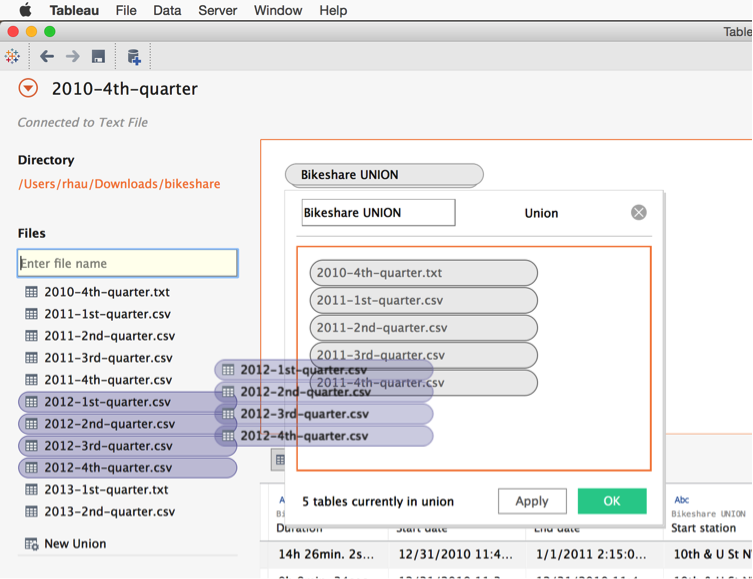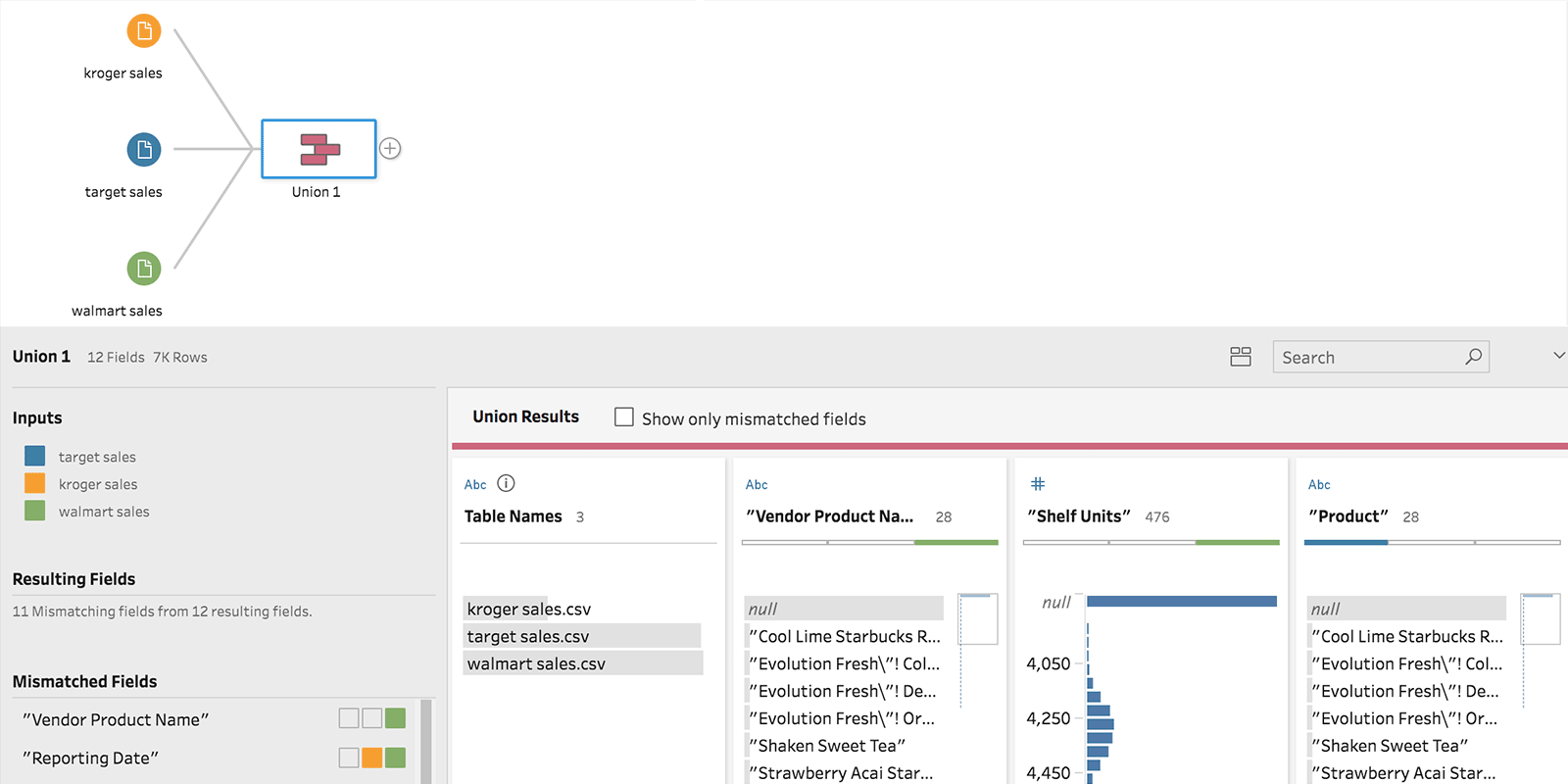
Sign up for our beta program, which is open to all Tableau customers.īy registering, you confirm that you agree to the processing of your personal data by Salesforce as described in the Privacy Statement. If you have dates or other information encoded in the file name, this column gives you access to it. With just a few clicks, I can quickly merge and name my fields.įor those of you who asked for a “filename” column in the Tableau 9.2 beta, you may have noticed a new column, “Table Name.” This column contains the name of the file from which each row originated. Just select the columns you want, right-click, and merge!

“Bike#” was renamed to be “Bike Key.” And “Duration” became “Duration (sec),” then “Duration(Sec).” This is a pretty common problem when data is split across multiple files, which is why Tableau 9.3 lets you quickly merge columns. Turns out the NYC government renamed the fields in each file. I have a problem, though: There are a ton of nulls in my data source! Here’s the view after I sort the fields alphabetically: Once I’ve included all the right tables in my Union, I can check the output in the data grid. Here you can add more tables, remove tables, and rename your Union. You can customize your Union from the table right-click menu and see the Union dialog. But now I can just drag and drop the tables into the canvas to create my Union. When I went to the NYC portal to get the data, I was surprised to find that it had been split across multiple csv files.īefore Tableau 9.3, I would’ve had to copy and paste all of the data into a single file to do my analysis. Let me show you how it works with some of New York City’s bikeshare data. We’ve added Union, which helps you piece together data that’s been split into little files. The good news: Tableau 9.3 offers a quick fix to that problem. As many of you have experienced, some data needs a lot of work before it can be sanely analyzed.
#Union tableau prep download
Update: Tableau 9.3 is here! Download now to try out the feature outlined below.ĭata doesn’t always come ready for analysis.
#Union tableau prep pdf
To learn more about the PDF connector, check out the Online Help.īy registering, you confirm that you agree to the processing of your personal data by Salesforce as described in the Privacy Statement. I encourage you to vote up your requests on the Ideas Forum or reach out to us via the beta forum! (If you haven't yet, be sure to sign up for the beta program to get access to new features and product discussions.) We know there are some limitations, and we would love to hear from you about your experience and needs. If you have PDF documents containing complex (hierarchical) tables, be assured that we’re continuing feature development with this in mind.

Now you can connect to PDF documents like you can a text file, leverage all of Tableau’s awesome capabilities (cross data-source joins, parameters, and more), and build impactful visualizations with ease. With this connector, pre-processing data from PDF documents by brute force or copy-pasting is a thing of the past. The PDF connector will allow you to connect to PDF files, identify tables, and let you treat this like any other data source within Tableau.

There are some tools (like pdftext) that let you do that, but building that capability directly into Tableau will save you the frustration involved and let you focus your energy on analyzing and exploring the data itself. Unfortunately, getting data out of PDF files can be a huge headache. Many of the world’s great open data portals (like ) catalog and distribute data in PDF format. PDF files are everywhere, from business reports to scientific publications (and everything in between).



 0 kommentar(er)
0 kommentar(er)
